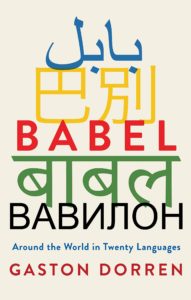We’re a bit nervous about this one, because people sometimes get upset when we call things that they want to be different the same. And when we say the Malay language, we’re lumping a bunch of stuff under that umbrella, as you’ll see below. Thankfully, since one of our go-to references on language did it (see below), we’re more confident that it’s okay, at least from a linguist’s perspective. As such, here is a quick introduction to the Malay language in 10 facts.
1
The language has a total of about 290 million speakers, with maybe 80 million being native speakers and the rest being second-language speakers. That makes it one of the 10 most-spoken languages in the world.
2
The language has official status in Malaysia, Singapore, Brunei, and Indonesia. It is also spoken in the southern Philippines, the southern tip of Thailand, East Timor, and the Australian external territories of the Cocos (Keeling) Islands and Christmas Island.
Here’s where it gets confusing. The standard form of the Malay language in most of Indonesia is called bahasa Indonesia (Indonesian language), also referred to as Indonesian. The standard form of the Malay language elsewhere is called bahasa Melayu (Malay language), though in Malaysia it often goes by bahasa Malaysia (Malaysian language). In either case, this second standard form is referred to by the outside world as Malaysian. None of this terminology captures the large number of dialects that are spoken and help account for the total number of speakers above.
3
Malay is in the Austronesian family of languages, which is thought by some to have originated from an ancestral language in Taiwan. More specifically, Malay is in the family’s Malayo-Polynesian branch, which also includes the likes of Tagalog and Javanese.
4
Like most Austronesian languages (but unlike languages such as Thai and Mandarin), Malay is not tonal. (A tonal language is one in which the meanings of some words can completely change based on the tone used.)
5
The earliest incontrovertible inscriptions in Old Malay are from the 7th century and typically used scripts of Indian origin.
6
In modern times, Malay is mostly written in the Latin alphabet, referred to as Rumi (literally Roman). The Arabic-based Jawi script is used less often, with Brunei being the exception. The Thai alphabet is used in Thailand.
7
Malay has 19 consonant sounds and six different vowel sounds. In the world of language, that’s considered simple phonology. As a means of comparison, English has over 20 different vowel sounds, which is uncommonly high.
8
Regional and colonial influences have resulted in loanwords from disparate sources including Sanskrit, Tamil, Arabic, and Persian. Malaysian has been disproportionately influenced by English (courtesy the British), and Indonesian has been disproportionately influenced by Dutch and Javanese. The result is a reasonable amount of vocabulary discrepancy between Malaysian and Indonesian, hence our sense of unease at the outset.
9
Of course, loanwords go both ways, and English has a reasonable number of words that are directly or indirectly of Malay origin. Examples include amok, compound (enclosed group of buildings), gecko, ketchup, orangutan, paddy, satay, and tea. Here is a more complete list.
10
While it’s natural to associate the Malay language with Malaysia, a visit to the country will also be met with a rather heavy dose of English, Mandarin, and Tamil.
If you’re mildly confused by some or all of the above, so are a lot of people. Unfortunately, day-to-day language evolution doesn’t occur with future categorization in mind.
